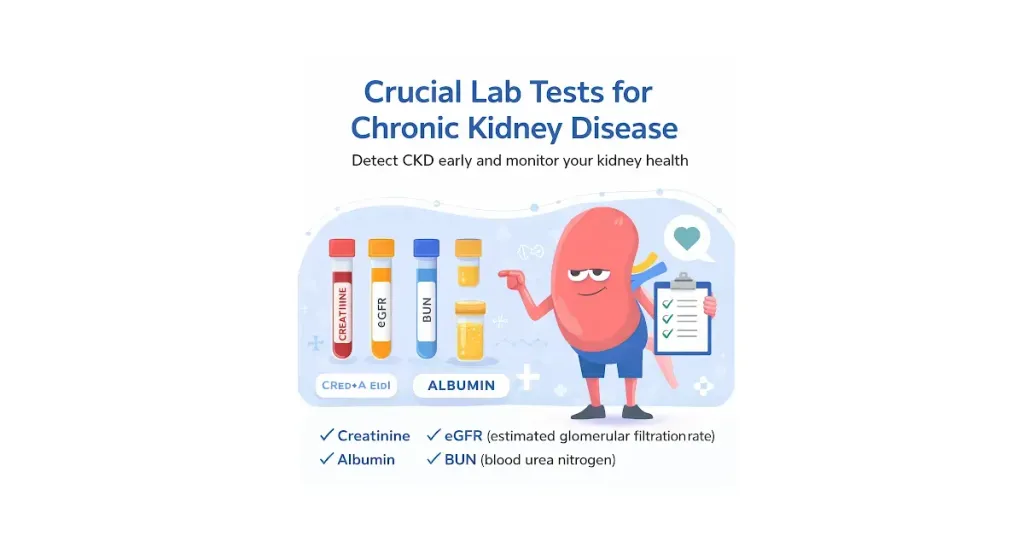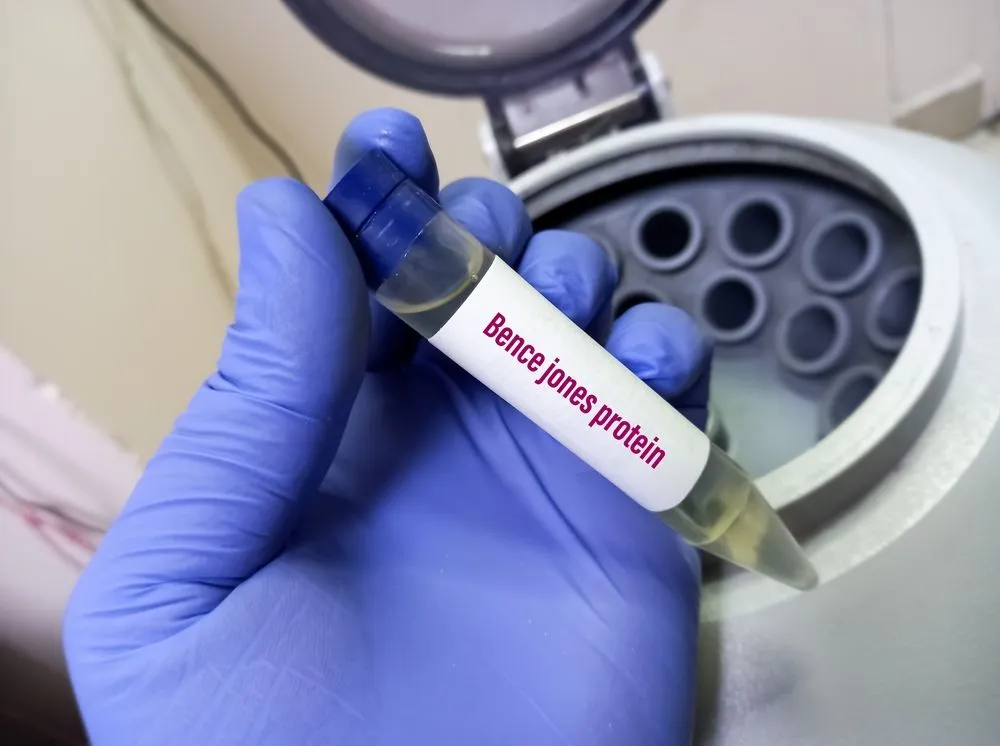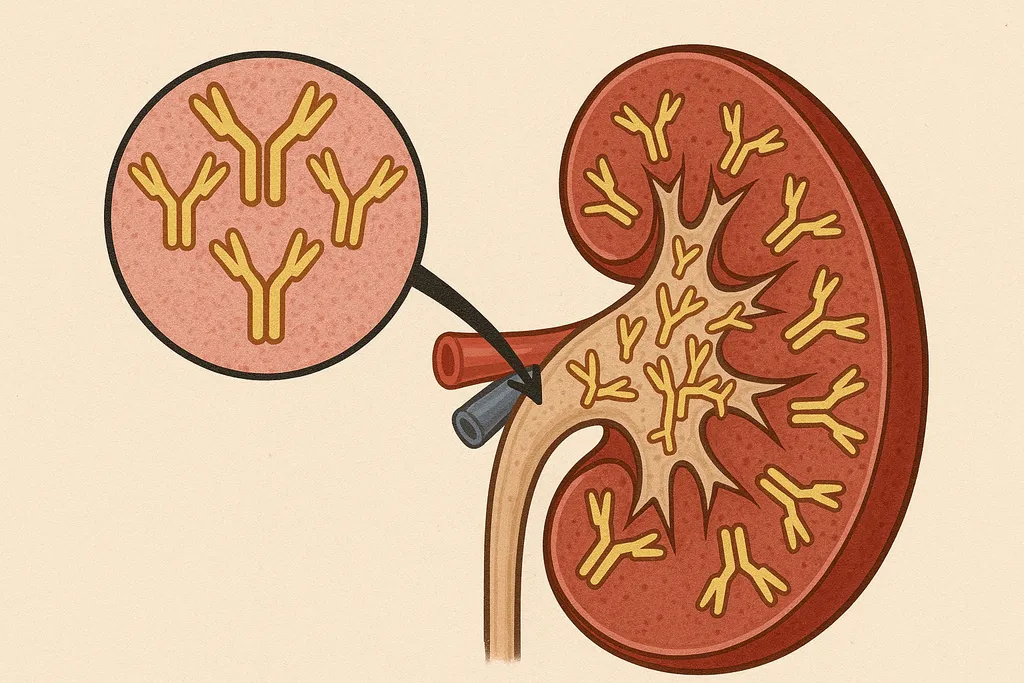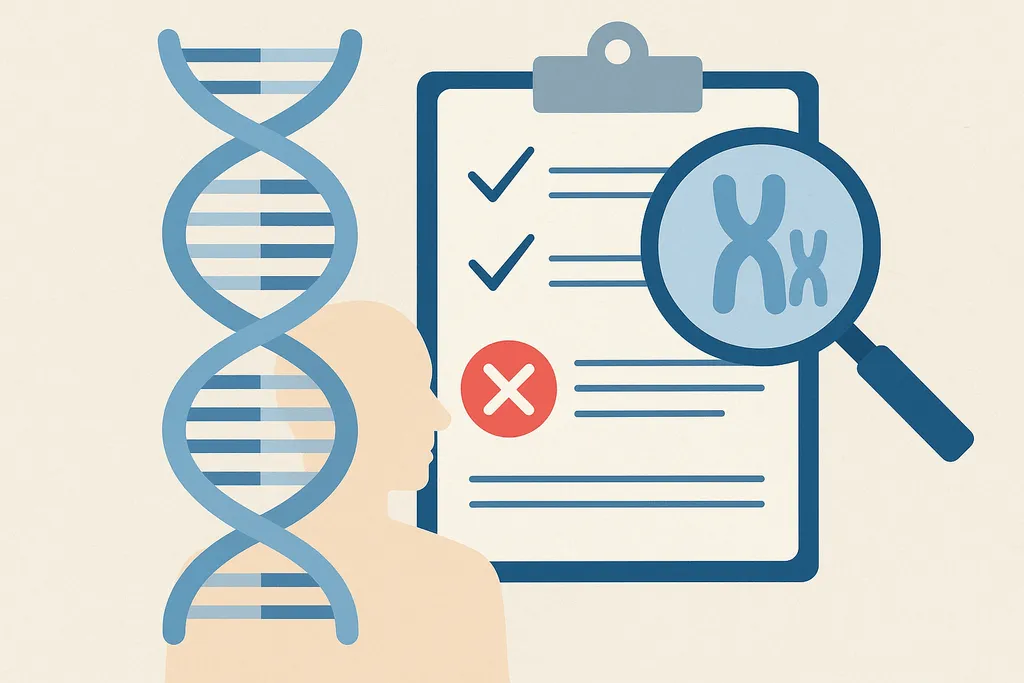Multiple Myeloma and the 4;14 Translocation
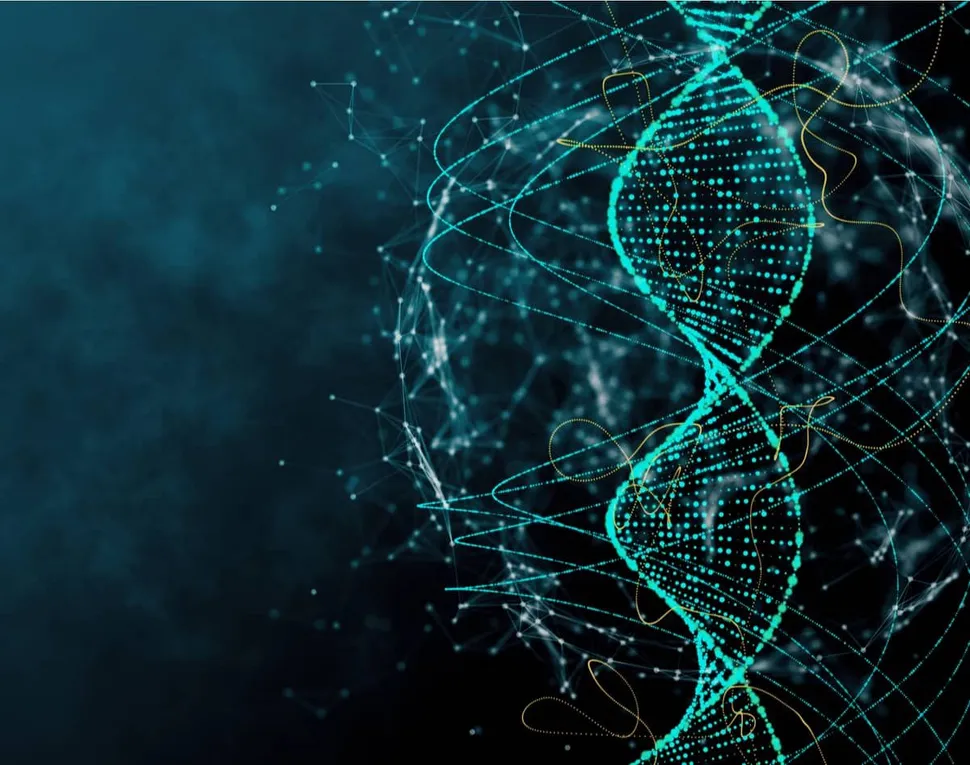
We know that there are different types of multiple myeloma, which is why myeloma is called a heterogeneous disease. Approximately 15-19% of multiple myeloma patients have the translocation of t(4;14). A t(4;14) translocation means that part of chromosome 4 has swapped places with chromosome 14. When a translocation like this happens, this genetic mutation can be found on all or a a subset of myeloma cells. Translocation of t(4;14) is one of the most common translocations and the Myeloma Crowd is running an ongoing study to determine the best possible treatment therapies for each unique genetic group of myeloma patients, starting with t(4;14). To date over 900 patients have joined the study. We invite you to join this study if you are a myeloma patient with t(4;14).
Join the Myeloma Crowd 4;14 Genetics Study
Understanding your genetic features is important as it will help you navigate your myeloma in better ways. We reviewed many research papers and articles on t(4;14) and hope this information will help those that have the translocation. All comments include a link to the source documents.
The t(4;14) has always been considered a high risk feature, but in a recent IMW discussion by French myeloma researcher Dr. Avet-Loiseau, he noted that by itself, t(4;14) should not be considered high-risk. He shared that patients with t(4;14) have widely varying outcomes which are many times dependent on the presence of additional mutations commonly found with t(4;14). Some patients' myeloma behaves as standard risk while others' does not. Here are other facts about risk and t(4;14) from additional studies. In research papers, study investigators found the following patterns for treatment outcomes:
In a study of t(4;14) patients, del17 patients and patients with both t(4;14) and del17p, median progression free survival was 25.6 months. Patients who received transplant had progression free survival of 76.1 months vs. 42.5 months for those not eligible for transplant. Tandem transplants (two auto transplants back-to-back) did not significantly improve overall survival compared to single auto transplant (75 months vs. 81.1 months). Patients diagnosed between 2001-2010 compared to patients diagnosed between 2011-2019 had no improvement in survival (even with newer therapies available).14
Also in studies, investigators found the following:
Genetic information is always complex, so bear with us. The following information shows relationships between genes that are affected by the t(4;14) mutation. Understanding these relationships (which seems like alphabet soup) may help find new, druggable targets.
We currently have over 900 participants in the genetics study and 82 of those are t(4;14) patients.
In the study to date, we reviewed the longest living 20 t(4;14) survivors. Here are common themes:
It's clear that t(4;14) patients should be using bortezomib, stem cell transplant and triplet consolidation therapy (steroid, IMiD, proteasome inhibitor) for as long as possible. The biggest takeaway for me was that there are very few studies of JUST t(4;14) patients. In most of the studies, all high risk patients (del17p, t(14;16), t(4;14) and 1q gain) are all lumped together. Because we know myeloma is NOT the same in all patients, wouldn't it behoove us as patients to get together to participate in a study and possibly donate tissue samples so that investigators could learn key information about our specific translocation faster? We are happy to facilitate this type of work for individual patient groups. Perhaps it is the patients that must care the most to make studies like this happen in order to advance the science.
Having 82 patients is a good sample size, however these 82 patients have had a whopping 48 different lines of therapy! In order to see better treatment patterns and outcomes, having more t(4;14) patients in the study helps us come to better conclusions with higher statistical significance. If you have the t(4;14) mutation, please consider joining the study below. In doing so, you will help all t(4;14) patients learn more about their disease.
General Facts About t(4;14)
T(4;14) Myeloma is High-Risk, Or Is It?
T(4;14) Myeloma Patient Responses to Treatment
Other Drugs That May Help
Genes or Pathways That Are Affected by t(4;14)
Top 20 t(4;14) Survivors in the Myeloma Crowd Genetics Study
Key Takeaways
Article Sources
- 1 Clinical and prognostic significance of t(4;14) translocation in multiple myeloma in the era of novel agents
- 2 Twist-1 is upregulated by NSD2 and contributes to tumour dissemination and an epithelial-mesenchymal transition-like gene expression signature in t(4;14)-positive multiple myeloma
- 3 The mevalonate pathway is an actionable vulnerability of t(4;14)-positive multiple myeloma
- 4 MicroRNA-532 exerts oncogenic functions in t(4;14) multiple myeloma by targeting CAMK2N1
- 5 MMSET I acts as an oncoprotein and regulates GLO1 expression in t(4;14) multiple myeloma cells
- 6 SMARCA2 Is a Novel Interactor of NSD2 and Regulates Prometastatic PTP4A3 through Chromatin Remodeling in t(4;14) Multiple Myeloma
- 7 The snoRNA target of t(4;14) in multiple myeloma regulates ribosome biogenesis
- 8 Single cell multiomic analysis and immune cell type profiling of multiple myeloma with t(4;14).
- 9 Cytogenetic abnormalities in multiple myeloma: association with disease characteristics and treatment response (Mayo Clinic 2020)
- 10 Prediction of outcome in newly diagnosed myeloma: a meta-analysis of the molecular profiles of 1905 trial patients (Institute of Cancer Research London 2017)
- 11 Outcome Of t(4;14) In Multiple Myeloma - Princess Margaret Cancer Centre Experience Over The Last 10 Years (2013)
- 12 The t(4;14) translocation and FGFR3 overexpression in multiple myeloma: prognostic implications and current clinical strategies
- 13 MB4-2/MB4-3 transcripts of IGH-MMSET fusion gene in t(4;14)pos multiple myeloma indicate poor prognosis
- 14 Survival Trends over 18 Years of Patients with Multiple Myeloma Harboring Del(17p) and/or t(4;14): A Retrospective Real-World Study
- 15 Targeting UCHL1 Induces Cell Cycle Arrest in High-Risk Multiple Myeloma with t(4;14)
- 16 Adenylate Kinase 2 Is a Selective Dependency in NSD2-High Multiple Myeloma
We know that there are different types of multiple myeloma, which is why myeloma is called a heterogeneous disease. Approximately 15-19% of multiple myeloma patients have the translocation of t(4;14). A t(4;14) translocation means that part of chromosome 4 has swapped places with chromosome 14. When a translocation like this happens, this genetic mutation can be found on all or a a subset of myeloma cells. Translocation of t(4;14) is one of the most common translocations and the Myeloma Crowd is running an ongoing study to determine the best possible treatment therapies for each unique genetic group of myeloma patients, starting with t(4;14). To date over 900 patients have joined the study. We invite you to join this study if you are a myeloma patient with t(4;14).
Join the Myeloma Crowd 4;14 Genetics Study
Understanding your genetic features is important as it will help you navigate your myeloma in better ways. We reviewed many research papers and articles on t(4;14) and hope this information will help those that have the translocation. All comments include a link to the source documents.
General Facts About t(4;14)
- All translocations involving the heavy chain 14 include about 40% of myeloma patients12
- Approximately 15% of all myeloma patients have the t(4;14)9
- Myeloma patients with the 4;14 translocation were found to have more anemia, lower albumin levels, higher m-protein levels, higher beta 2 microglobulin levels and higher than 50% of plasma cells in the bone marrow at diagnosis.9
- Kidney disfunction was not found to be higher for t(4;14) patients9
- The frequency of t(4;14) decreases with age9
- T(4;14) is frequently found in association with a deletion of chromosome 13 (del13) and a gain of 1q10
- Trisomies (when there are three instances of a particular chromosome instead of two) of 3 and 5 significantly improve overall survival in patients with multiple myeloma with t(4;14) genetic mutations.10
- The t(4;14) translocation, is undetectable by conventional cytogenetic analysis12
- There is a link between t(4;14) and the IgA heavy/light chain type1
T(4;14) Myeloma is High-Risk, Or Is It?
The t(4;14) has always been considered a high risk feature, but in a recent IMW discussion by French myeloma researcher Dr. Avet-Loiseau, he noted that by itself, t(4;14) should not be considered high-risk. He shared that patients with t(4;14) have widely varying outcomes which are many times dependent on the presence of additional mutations commonly found with t(4;14). Some patients' myeloma behaves as standard risk while others' does not. Here are other facts about risk and t(4;14) from additional studies.
- Even in the era of novel drugs, t(4;14) MM still has a poor prognosis, and triplet consolidation therapy should be continued.1
- Even in the age of newer therapies, the t(4;14), t(14;16), and p53 high-risk cytogenetic abnormalities remain an independent factor for myeloma outcomes. New strategies are still greatly needed.1
T(4;14) Myeloma Patient Responses to Treatment
In research papers, study investigators found the following patterns for treatment outcomes:
- Study authors suggest that intensive early-line treatment is key, and should be performed while measuring MRD, since treatment of t(4;14) tends to be less effective following relapsed or refractory myeloma. Deep responses at initial therapy are important.1
- Proteasome inhibitors are more helpful for t(4;14) patients than immunomodulators, but patients receiving a proteasome inhibitor with an IMiD have equally good outcomes. 8 9
- In a study, t(4;14) patients accounted for 53% of being doubly resistant to proteasome inhibitors (PI) and immunomodulatory drugs (IMiDs)1
- In a study, there was no significant difference in outcomes following stem cell transplant. However, several t(4;14) patients relapsed during lenalidomide maintenance therapy1
- Daratumumab may be effective for IgA-type relapsed/refractory myeloma, and it may be better to consider a daratumumab regimen, especially in IgA-type myeloma cases with t(4;14).1
- Daratumumab–bortezomib–melphalan–prednisone (DaraVMP) and Daratumumab–lenalidomide–dexamethasone (DRd) may be good first-line therapy choices for IgA-type t(4;14) transplant-ineligible patients, especially if a deep response from the first-line treatment is required.1
- When recurrence was observed during the use of newer drugs, the relapse was both in m-protein increases as well as the formation of extramedullary masses, central nerve system relapse, and progression to plasma cell leukemia. After such a relapse, patients showed resistance to other novel drugs and very severe mortality. In contrast, patients who continued triplet consolidation maintained a good response without recurrence. Therefore, PI and IMiDs triplet consolidation for as long as possible may yield prolonged overall survival and progression free survival.1
- New cellular therapies like bispecific antibodies and CAR T may improve survival but little data is available to date
-
In a study of t(4;14) patients, del17 patients and patients with both t(4;14) and del17p, median progression free survival was 25.6 months. Patients who received transplant had progression free survival of 76.1 months vs. 42.5 months for those not eligible for transplant. Tandem transplants (two auto transplants back-to-back) did not significantly improve overall survival compared to single auto transplant (75 months vs. 81.1 months). Patients diagnosed between 2001-2010 compared to patients diagnosed between 2011-2019 had no improvement in survival (even with newer therapies available).14
Other Drugs That May Help
Also in studies, investigators found the following:
- In a study, the data showed that the t(4;14) translocation was a biomarker of statin sensitivity and warrant further clinical evaluation of a statin in combination with bortezomib for the treatment of t(4;14)-positive disease. (statins lower cholesterol). The statin fluvastatin was used in the study to improve outcomes when used with bortezomib.3
- If t(4;14) patients have the FGFR3 mutation (and not an NRAS mutation), a tyrosine kinase inhibitor called Dovintinib could be effective 12
- A monoclonal antibody inhibitors of FGFR3 called R3Mab stopped myeloma cell growth in a mouse model that had the FGFR3 mutation. 12
- The t(4;14) chromosomal translocation leads to overexpression of NSD2. NSD2 overexpression drives greater clone growth, proliferation, altered adhesion and chemo-resistance in myeloma cells. Cells high in NSD2 are more sensitive to bortezomib, suggesting higher levels of endoplasmic reticulum (ER stress). Higher ER stress causes higher levels of ATP to refold proteins and could underlie the increased dependency of NSD2-high cells on AK2. When AK2 was suppressed, there was increased sensitivity to bortezomib in myeloma cell lines. Therefore, AK2 inhibition could be used in combination with proteasome inhibitors to treat myeloma patients with t (4;14) translocations.16
Genes or Pathways That Are Affected by t(4;14)
Genetic information is always complex, so bear with us. The following information shows relationships between genes that are affected by the t(4;14) mutation. Understanding these relationships (which seems like alphabet soup) may help find new, druggable targets.
- The most common genes affected by t(4;14) are the multiple myeloma SET domain-containing protein (MMSET) and the fibroblast growth factor receptor 3 (FGFR). In a t(4;14) study, MMSET was overexpressed in all myeloma plasma cells in all patients. However, FGFR levels were only expressed on 70% of patient plasma cells. 8
- Studies suggest that MMSET helps regulate DNA repair and overall gene expression. 12
- T(4;14) MMSET increases glyoxalase I (GLO1) expression. When GLO1 is knocked down, myeloma cells die and stop forming new colonies. MMSET I might be a potential molecular target in t (4;14) MM therapy.5
- FGFR activation has a critical role in both embryo development and in adult cell proliferation, survival, migration, differentiation and growth arrest. The use of FGFR3 inhibitors for patients with t(4;14) MM represents a potential targeted and personalized approach.12
- In a study, increased expression of RCAN3 (associated with cereblon depletion) was detected at relapse in t(4;14) patients. Higher levels of RCAN3 may explain the failure of immunomodulatory therapy which use work because they target the cereblon pathway8.
- An increase of the gene TWIST1 by NSD2 in t(4;14) myeloma may contribute to the poor outcomes. The TWIST1 gene's job is to make a protein that determine's the protein's 3-D shape and enables it to target certain sequences of DNA. This group of DNA regulates the development of organs and tissues before birth. The TWIST1 gene promotes myeloma tumor growth downstream of NSD2 by increasing myeloma plasma cell migration.2
- The identification of an EMT-like gene expression signature in t(4;14) patients increases our understanding of how this translocation leads to a poor prognostic outcome.2
- NSD2 is the primary oncogenic driver in t(4;14) multiple myeloma. NSD2 has an impact on histone-modifying enzymes and chromatin remodelers like SMARCA2. A mouse model study showed that treatment with PFI-3 reduced the growth of t(4;14) mouse tumors.6
- A study demonstrated that t(4;14)-positive cells are highly dependent on the mevalonate (MVA) pathway for survival. The study also showed that inhibiting the MVA pathway with a statin preferentially induced myeloma cell death in t(4;14)-positive cells.3
- MicroRNAs play important roles in cancer development and progression, such as proliferation, invasion, chemo-resistance, etc. MicroRNA-532 is an important regulator in t(4;14) MM. MicroRNA-532 promotes cell growth and spread in vitro and in vivo. Studies in the lab show that higher MicroRNA-532 significantly promoted myeloma cell proliferation and migration. Inhibiting MicroRNA-532 showed the opposite effects. CAMK2N1 is a gene that can suppress tumors, so it is a potential target of MicroRNA-532 cells for t(4;14) myeloma treatment.4
- The orphan small nucleaolar RNA (snoRNA) ACA11 is increased because of t(4;14). It drives cell proliferation and increases argyrophilic nuclear organizing regions (AgNORs). There are more of these NORs at relapse than at diagnosis. Having higher levels of ACA11 made the myeloma cells more responsive to proteasome inhibitors. No effect was found in response to high doses of melphalan. Study data suggests that treatments targeting oxidative stress could be used combined with proteasome inhibitors.7
- The t(4;14) patient group was significantly associated with hypodiploidy lesions del(12p), del(13q) and del(22q).10
- NF kappa B-inducing kinase (NIK) increased signals found in t(4;14) affects BIRC2, BIRC3 and TRAF3 proteins. BIRC2/CIRC3 deletions were enriched in t(4;14). The t(4;14) mutations without the BIRC2/BIRC3 deletions were frequently TRAF3 deleted. 10
- BIRC NFκB-pathway deletions are enriched in t(4;14) myeloma. Almost all t(4;14) tumors with any BIRC2/BIRC3 deletion expressed FGFR3, more than expected.10
- The t(4;14) patient groups with MMSET who have MB4-2/MB4-3 breakpoints have worse prognosis. 13
- The most significantly differentially expressed gene in patients with t(4;14) was UCHL1, when compared with samples derived from standard-risk MM patients and high-risk MM patients not harboring t(4;14). UCHL1 is a key regulator of the invasion and metastasis of several tumors (pancreatic, breast, ovarian, etc). CCND2 was the only affected gene downstream of UCHL1. A LDN-5744 inhibitor was able to stop the myeloma cell cycle in cell lines. and more work is needed on this target.15
Top 20 t(4;14) Survivors in the Myeloma Crowd Genetics Study
We currently have over 900 participants in the genetics study and 82 of those are t(4;14) patients.
In the study to date, we reviewed the longest living 20 t(4;14) survivors. Here are common themes:
- 9 out of the 20 started with a precursor condition (MGUS > SMM > MM or SMM > MM)
- 15 out of the 20 were seeing a myeloma specialist who modified their treatment quickly at relapse
- 5 out of the 20 participated in one or more clinical trials
- 15 out of the 20 had additional genetic features (like 1q gain, del13, t(14;16) or del17p).
- Patients with only the t(4;14) had longer remissions and fewer lines of therapy
- 14 out of the 20 used single auto stem cell transplant
- 7 out of the 14 (above) had a second salvage auto stem cell transplant years later
- 1 out of the 20 had prior tandem transplant and a 4 drug maintenance therapy
- Types of myeloma (IgA Kappa - 5, IgG kappa - 8, IgA Lambda - 2, IgG Lambda - 4, no type listed - 1)
Key Takeaways
It's clear that t(4;14) patients should be using bortezomib, stem cell transplant and triplet consolidation therapy (steroid, IMiD, proteasome inhibitor) for as long as possible. The biggest takeaway for me was that there are very few studies of JUST t(4;14) patients. In most of the studies, all high risk patients (del17p, t(14;16), t(4;14) and 1q gain) are all lumped together. Because we know myeloma is NOT the same in all patients, wouldn't it behoove us as patients to get together to participate in a study and possibly donate tissue samples so that investigators could learn key information about our specific translocation faster? We are happy to facilitate this type of work for individual patient groups. Perhaps it is the patients that must care the most to make studies like this happen in order to advance the science.
Having 82 patients is a good sample size, however these 82 patients have had a whopping 48 different lines of therapy! In order to see better treatment patterns and outcomes, having more t(4;14) patients in the study helps us come to better conclusions with higher statistical significance. If you have the t(4;14) mutation, please consider joining the study below. In doing so, you will help all t(4;14) patients learn more about their disease.
Article Sources
- 1 Clinical and prognostic significance of t(4;14) translocation in multiple myeloma in the era of novel agents
- 2 Twist-1 is upregulated by NSD2 and contributes to tumour dissemination and an epithelial-mesenchymal transition-like gene expression signature in t(4;14)-positive multiple myeloma
- 3 The mevalonate pathway is an actionable vulnerability of t(4;14)-positive multiple myeloma
- 4 MicroRNA-532 exerts oncogenic functions in t(4;14) multiple myeloma by targeting CAMK2N1
- 5 MMSET I acts as an oncoprotein and regulates GLO1 expression in t(4;14) multiple myeloma cells
- 6 SMARCA2 Is a Novel Interactor of NSD2 and Regulates Prometastatic PTP4A3 through Chromatin Remodeling in t(4;14) Multiple Myeloma
- 7 The snoRNA target of t(4;14) in multiple myeloma regulates ribosome biogenesis
- 8 Single cell multiomic analysis and immune cell type profiling of multiple myeloma with t(4;14).
- 9 Cytogenetic abnormalities in multiple myeloma: association with disease characteristics and treatment response (Mayo Clinic 2020)
- 10 Prediction of outcome in newly diagnosed myeloma: a meta-analysis of the molecular profiles of 1905 trial patients (Institute of Cancer Research London 2017)
- 11 Outcome Of t(4;14) In Multiple Myeloma - Princess Margaret Cancer Centre Experience Over The Last 10 Years (2013)
- 12 The t(4;14) translocation and FGFR3 overexpression in multiple myeloma: prognostic implications and current clinical strategies
- 13 MB4-2/MB4-3 transcripts of IGH-MMSET fusion gene in t(4;14)pos multiple myeloma indicate poor prognosis
- 14 Survival Trends over 18 Years of Patients with Multiple Myeloma Harboring Del(17p) and/or t(4;14): A Retrospective Real-World Study
- 15 Targeting UCHL1 Induces Cell Cycle Arrest in High-Risk Multiple Myeloma with t(4;14)
- 16 Adenylate Kinase 2 Is a Selective Dependency in NSD2-High Multiple Myeloma
about the author
Jennifer Ahlstrom
Myeloma survivor, patient advocate, wife, mom of 6. Believer that patients can contribute to cures by joining HealthTree Cure Hub and joining clinical research. Founder and CEO of HealthTree Foundation.
More on Core Education
Trending Articles
Upcoming Events




Get the Latest Multiple Myeloma Updates, Delivered to You.
By subscribing to the HealthTree newsletter, you'll receive the latest research, treatment updates, and expert insights to help you navigate your health.
Together we care.
Together we cure.
3x Faster.

